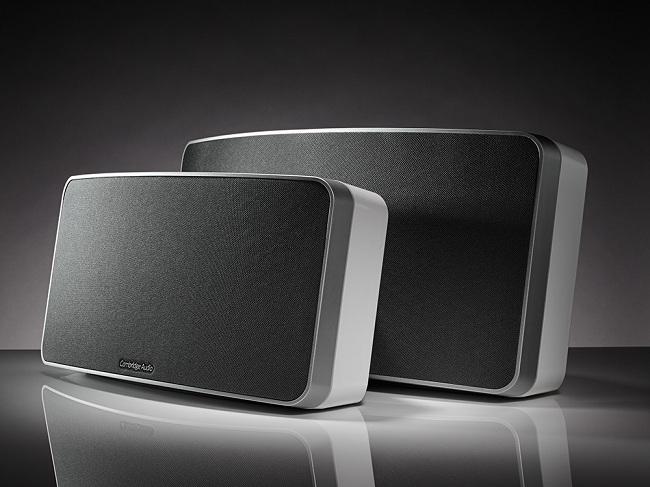 Check out our reviews of the Cambridge Audio Minx Air 200 and the Cambridge Audio Minx Go bluetooth speakers.
Check out our reviews of the Cambridge Audio Minx Air 200 and the Cambridge Audio Minx Go bluetooth speakers.
One does not have to look too hard to find wireless AirPlay or Bluetooth-enabled loudspeakers in 2013, but our reaction has been decidedly mixed in regard to some of the products that have recently been through our testing lab here at Digital Trends. Very few products have overachieved like the Definitive Technology Sound Cylinder or NuForce S3-BTs, so when the folks at Cambridge Audio invited us for an exclusive preview of its new Minx Air series of wireless loudspeakers, we jumped at the opportunity.
Cambridge Audio has been an established high-end audio brand for almost forty-five years; it was actually one of the first European audio manufacturers to build its products in China to keep costs down and make its products more affordable. From a value perspective, Cambridge Audio has built itself a solid position in both the two-channel and multi-channel markets.
While its products have consistently received solid reviews, the knock against the company has always been that its products lacked the panache of competing products from its rivals over at Arcam, Marantz, and Yamaha. If you’re looking for fancy looking gold finishes, or all of the bells and whistles on your audio hardware, Cambridge Audio’s equipment is unlikely to do it for you. Cambridge’s focus has always been on delivering on three fronts: sound quality, reliability, and value for your money.
On the marketing end, the company has been decidedly bashful in the past but that is going to change. It was one of the first audio manufacturers to offer wireless audio almost 8 years ago, and its Stream Magic 6 network music player ($1,150) is one of our absolute favorites in the category offering incredible sound quality and connectivity options.
With a solid track record in wireless audio, Cambridge Audio decided two years ago to begin development of its Minx Air AirPlay and Bluetooth-enabled wireless loudspeakers, and while the products are already available for sale in Great Britain, they will not be available on our side of the pond until the end of May.
The rather impressive looking line-up includes the Minx Air 200 ($600), Minx Air 100 ($450), and the super-affordable Minx Go ($150) which goes on sale in June. The details on the Minx Go, with which we have already had a chance to play, are under embargo until the middle of June, so we are limited in what we can report, but it is safe to say that the Definitive Technology Sound Cylinder has a worthy foe.
While both products share the same aesthetic design and support Apple AirPlay, Internet radio, and Bluetooth-connectivity, the real differences are to be found under the hood.
The Minx Air 200 features a 200-watt per channel digital amplifier that drives two 2 1/4–inch BMR (Balanced Mode Radiator) drivers and a single 6 ¼-inch subwoofer. The Minx Air 100 features a similar 100 watt per channel digital amplifier, but the driver complement loses the 6 ¼-inch subwoofer, favoring just two 4-inch BMR drivers instead.

In terms of build quality, both are built like tanks and you can feel the quality just lifting them off the table. The sleek design is attractive and likely to earn praise from the spouse if one was concerned about placing them in a living room or bedroom setting. We also liked the rubberized bottom that makes it almost impossible for a child to slide the music system off its surface.
On the wireless front, both systems offer support for AirPlay (via the Ethernet port on the rear of the cabinet), Bluetooth (aptX, AAC, and SBC compatibility), and Internet radio. One feature we really like are the 5 preset buttons on the top of the cabinet which have been programmed by Cambridge Audio to offer the 5 most popular Internet radio stations based on market location. Neither product is DLNA-certified.
Both the Minx Air 200 and 100 feature two auxiliary inputs ( 3.5 mm and RCA) for connecting an iPod, smartphone, HDTV, or even a turntable (via an external phono stage). The rear panel also includes an Ethernet jack, a bass control, reset button, power receptacle, and the aforementioned analog inputs. Both models come with a credit card sized remote control and Cambridge Audio has already made available for free, remote apps for both iOS and Android-based devices. Both apps can be downloaded from their respective app stores.

The Minx Air 200 and 100 will be available online and from Cambridge Audio’s select group of 250 retailers across the United States by the end of May.


